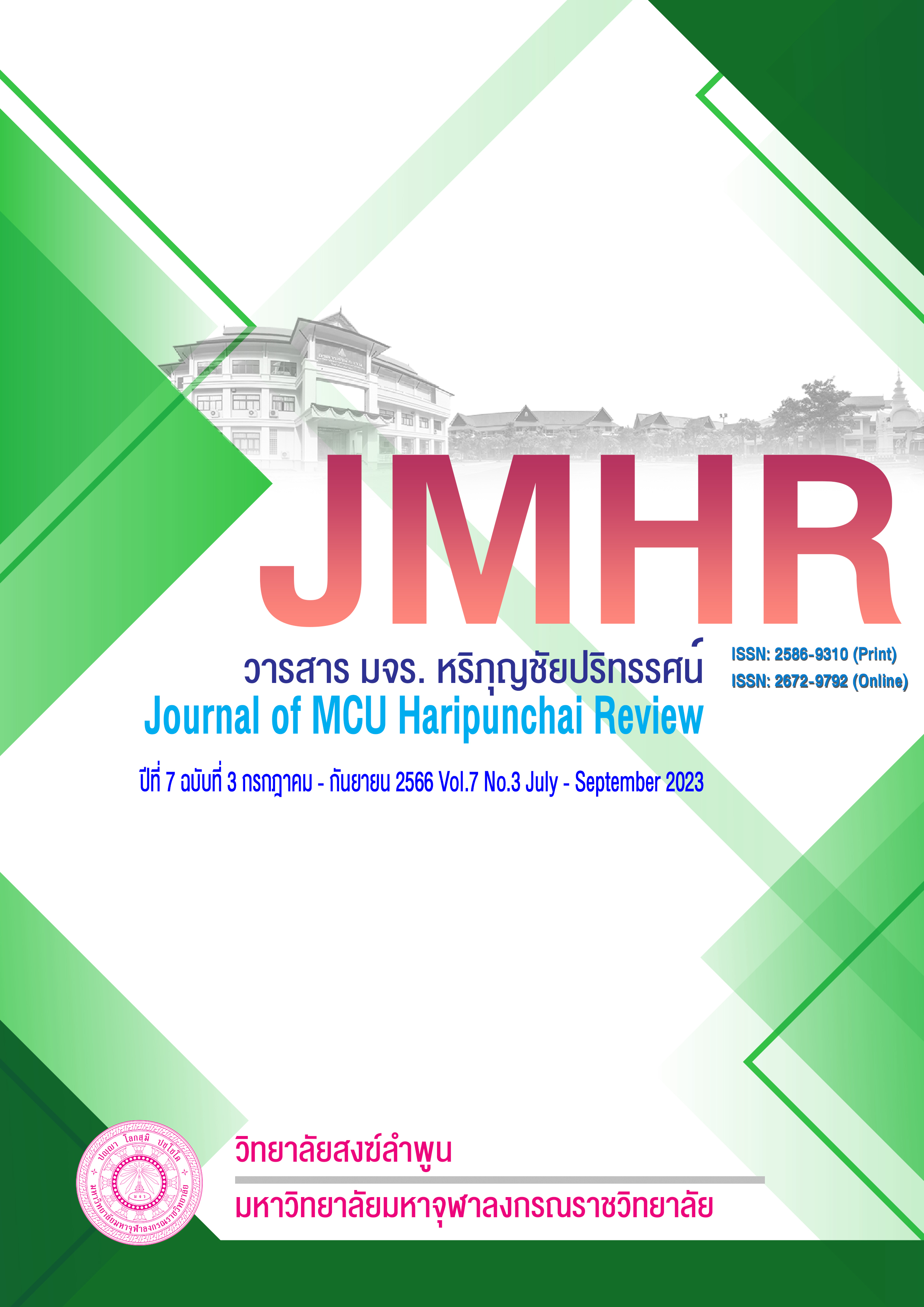Metallurgy and the creation of Buddhist arts
Main Article Content
Abstract
This academic article The objectives were: Analyzing the property values in metallurgy, beliefs, meanings and merits of creation. used in the creation of Buddhist works of art that appeared in the history of Buddhism as well as in creating Buddhist works of Thai society in the past The development of metallurgy in Buddhist art in a contemporary context reflects the technological advancement and methods used to create various Buddhist works of art. innovative form of creation there are important findings that The results were found: Historically, t Properties and values of metallurgy in material science. It is related to the creation of Chitkathan to offer the cremation of the Buddha's body in the history of the Lord Buddha as stated in the Tripitaka. and also used to create works of Buddhist art works in terms of architectures, sculptures and paintings in a variety of forms and methods appearing in Buddhist art works Ethnic groups that beliefs in Buddhism Including in being used in the creation of Buddhist art works of the Thai nation. for a long time In the context of contemporary metallurgy that appears in Buddhist art works. There have been developments in terms of the development of properties in materials science. Technology and creative methods have resulted in the creation of innovative Buddhist art works that have visual and aesthetic values in the contemporary context and have a significant effect on future development of Buddhist art works.by significantly
Article Details

This work is licensed under a Creative Commons Attribution-NonCommercial-NoDerivatives 4.0 International License.
References
กิติยา อุทวิ. (2550). “ความเชื่อและคุณค่าของการสร้างพระพุทธปฏิมาสำริดในล้านนา”. วิทยานิพนธ์พุทธศาสตรมหาบัณฑิต. บัณฑิตศึกษา : มหาวิทยาลัยมหาจุฬาลงกรณราชวิทยาลัย.
พระครูโสภณสุทธิวัฒน์. (2549). ประวัติพระพุทธมหาสุวรรณปฏิมากร. พิมพ์ครั้งที่ 2. กรุงเทพมหานคร : บริษัท กราฟิกอาร์ตพริ้นติ้ง จำกัด.
พระพุทธพุกาม พระพุทธญาณ. (2557). มูลศาสนา. กรุงเทพมหานคร : ศรีปัญญา.
พระมหาอุดม ปญฺญาโภ (อรรถศาสตร์ศรี). (2555). “การศึกษาวิเคราะห์พุทธศิลป์เชิงสุนทรียศาสตร์ : ศึกษากรณีเฉพาะพระพุทธรูปสมัยอยุธยา”. วิทยานิพนธ์พุทธศาสตรมหาบัณฑิต. บัณฑิตวิทยาลัย : มหาวิทยาลัยมหาจุฬาลงกรณราชวิทยาลัย.
พราหมณ์นราสุธรรมภี. (2559). มหาธาตุเจดีย์. พิมพ์ครั้งที่ ๒. กรุงเทพมหานคร : หจก. เรือนแก้วการพิมพ์.
เพิ่มศักดิ์ วรรยางกูร . (2545). วิถีธรรมวิถีไทย. กรุงเทพมหานคร : อาร์ทลีย์ เพรส.
มหาจุฬาลงกรณราชวิทยาลัย. (2539). พระไตรปิฎกภาษาไทย ฉบับมหาจุฬาลงกรณราชวิทยาลัย. กรุงเทพมหานคร: โรงพิมพ์มหาจุฬาลงกรณราชวิทยาลัย.
วิเชียร สุรินต๊ะ. อุไร ไชยวงศ์ (ปริวรรต). ชัปนะ ปิ่นเงิน (ตรวจทาน). (2544). อานิสงส์ล้านนา การปริวรรตและสาระสังเขป. เชียงใหม่: สถาบันวิจัยสังคม มหาวิทยาลัยเชียงใหม่.
วิทยา พลวิฑูรย์. (2555). แต้มเส้นเขียนลาย คำจั๋งโก๋. เชียงใหม่ : พิมพ์นานา.
ศักดิ์ชัย สายสิงห์. ศ.ดร. (2551). พุทธปฏิมา งานช่างพลังแห่งศรัทธา. นนทบุรี : โรงพิมพ์มติชนปากเกร็ด.
________. (2556). พุทธศิลป์สมัยรัตนโกสินทร์ พัฒนาการของงานช่างและแนวคิดที่ปรับเปลี่ยน. กรุงเทพมหานคร : โรงพิมพ์ฟิสิกส์เซ็นเตอร์.
องค์ดาไลลามะ. (2559). ปรัชญาปารมิตาหฤทัยสูตร แปลโดย นัยนา นาควัชระ. กรุงเทพมหานคร : หจก.สามลดา.
Carol Stratton. (2004). Buddhist Sculpture of Northern Thailand. Thailand : Silkworm Books Publication.


